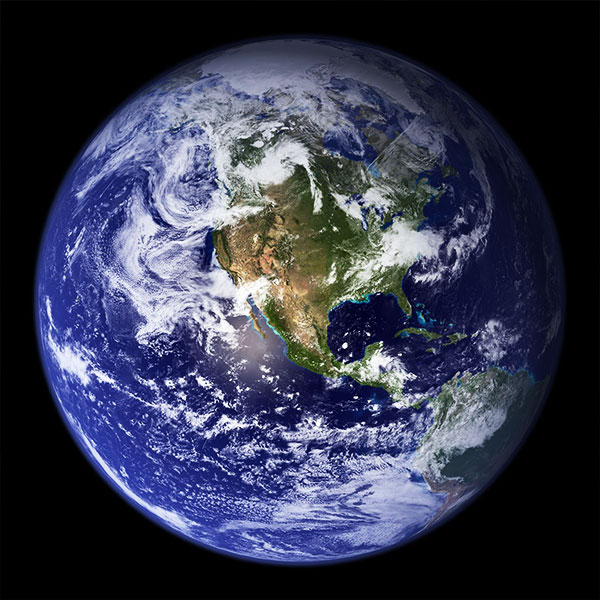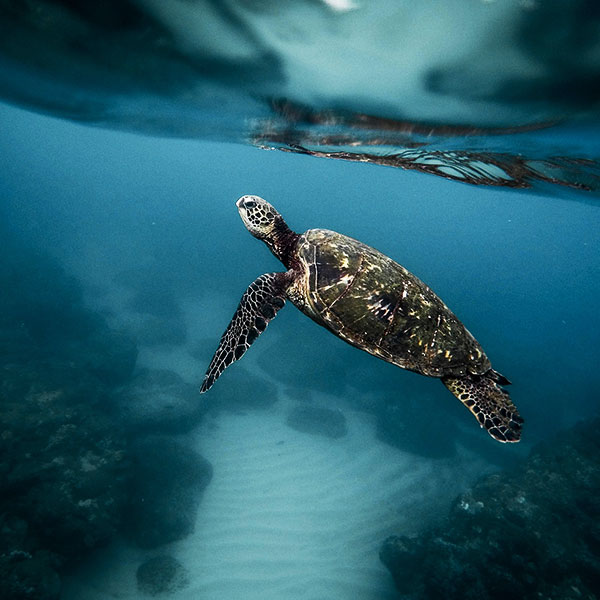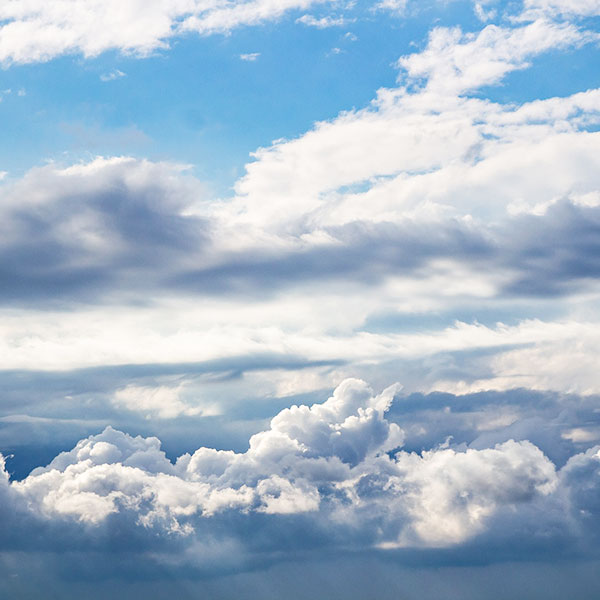Vertebrates make up a small number of total species alive today however they are dominant across various ecosystems and that has been the case over the last few hundred million years. Different types of vertebrates have dominated at different times, today it is us. One distinguishing feature of the vertebrates is the vertebral column (spine, backbone).
Early Life
Life began to evolve on earth around 3.5 billion years ago, as single celled organisms, in an atmosphere primarily of methane and carbon dioxide. Some of these organisms would evolve to photosynthesise, using new mechanisms and sources of energy to produce the by-product of free oxygen, polluting the atmosphere with oxygen and causing the first big wave of oxygenation. Life would evolve to harness this method of energy use, become stable for a billion years and develop into simple multi cellular organisms.
Around 1 to 1.2 billion years ago, sexual reproduction evolved, which created better offspring than simply cloning organisms into like for like, producing no variation and taking longer for species and offspring to adapt to different environments. Around 800 million years ago, the first sponge like multi cellular organisms evolved.
The first complex multi cellular organisms were the Ediacaran biota, from the Ediacaran time period of 635 million years ago to 538 million years ago, the period before the Cambrian explosion. They were primarily immobile and on the sea floor. It is not fully agreed upon where they sit on the tree of life, somewhere maybe between plants and animals, some form of fungi. Nevertheless, they are the earliest known complex organisms, with fabulous patterns to their body structure.
Bone
Bone has evolved to be rather complex with various types of cells serving various functions. Today bones make up the skeleton, whether it’s an exoskeleton, endoskeleton or a hydroskeleton. Alongside bones is cartilage, a type of connective tissue that provides further stability to the skeleton and protects bones in certain areas.
Early life evolved to have shells on the external of their bodies. Evidence of shells dates back to just before the Cambrian explosion. The first shells were very small, made primarily of calcium found on the sea floor. It is thought that due to life evolving rapidly and organisms ingesting each other for nutrients rather than just absorbing nutrients through the body itself from the sea floor or floating around in the sea, the predator prey balance began to shift. Evolution had to experiment with ways to protect prey and make predators deadlier in response to this increased protection. This is probably why the Cambrian explosion has many more fossils than previous life because shells fossilise rather well, soft body organisms are difficult to fossilise.
The first bone evidence, similar to bones today with cells, dates back to around 400 million years ago. Bone and skeletons developed to provide structure and support for growing complex multi cellular organisms, to give organisms better protection and means of obtaining and ingesting food and bring a new level of diversity to life. This adaptation would prove highly successful, majority of animals today have some form of skeleton.
What is a Vertebrate?

Taxonomy
Taxonomy is the study of naming and defining biological organisms in order to group them together according to common characteristics. On a broader basis, the same principle can be applied to organise pretty much anything. This has been useful over the centuries as more and more species have been discovered, we can create sub groups in order to accommodate them within the current classification system. With this, it is easier to visually see the connections between species, and how far or closely two species are related to each other.
The Linnaean system is the basis of the system used today to organise all the organisms that have ever lived, or rather that have been discovered to have lived. From the time of Carl Linnaeus, it has been altered according to new discoveries and now takes the form of phylogenetics.
Classification of Vertebrates
The ‘kingdom’ of Animalia is where we start. Above this there are other levels. Under the kingdom, there are 31 ‘phyla’ depending on definition. One of those is Chordata, in which organisms are characterised by a few distinct embryonic features.
Vertebrates is a ‘subphylum’ officially called Vertebrata that comes under the ‘phylum’ of Chordata, which are essentially organisms with backbones and some other key characteristics regarding body plan. Within this subphylum of Vertebrata, there are 7 ‘classes’. Three of these are types of fish, the other four are tetrapods which are: reptiles, amphibians, birds and mammals.
It is estimated that currently there are probably around 1 to 2 million total species alive today, however that number could even be 10 or 100 million. Vertebrates are around 50,000 to 60,000 species today. Fish make up over half of the number of vertebrate species and the tetrapods make up the rest, split between the four classes.
Characteristics of Vertebrates
Vertebrates have an endoskeleton (skeleton inside the body) which provides the framework for pairs of muscles, and a spinal cord which gives rise to a central nervous system. Where the early nerves collected at the end of the backbone, evolved into the first brain and into three primary brain vesicles. Vertebrates undergo sexual reproduction mostly and suffer from inbreeding problems.
Within the central and peripheral nervous system, the axons and dendrites of neurons have a kind of insulation that helps to increase processing power. This coupled with the growth of the brain comparable to body size, means that vertebrates have been able to grow to huge physical size while maintaining their cognitive functions for speed, agility and sensory abilities. Other organisms that are loosely referred to as invertebrates, don’t necessarily grow to a big size and still maintain the cognitive command, they tend to be clumsier the bigger they get.
Origins
518 million years ago – They originated in the Cambrian explosion and have massively diversified since then.
485 to 443 million years ago Ordovician period – The first jawed vertebrates probably appeared
419 to 358 million years ago Devonian period– jawed vertebrates were the common organism, wiping out most of the jawless species that reigned before, sometimes dubbed as the Age of Fish
359 – 298 million years ago Carboniferous period – The first tetrapods came onto land adjusting to life near the water and on land. This is the period of the great forests and the basis of the coal deposits we use today, sometimes dubbed the Age of Amphibians.
251 – 66 million years ago Mesozoic era – The Age of Reptiles, or the Age of Dinosaurs. Dinosaurs really did rule the earth for a long time, growing to huge proportions and diversifying into the first birds
66 million years ago to today – Cenozoic era – The Age of Mammals. After the wipe out of dinosaurs, birds and mammals took over dominance. Mammals on land took over niches left by the dinosaurs and a new era of speciation began for the vertebrates.
Vertebrates vs invertebrates
Invertebrates isn’t actually a term used in official taxonomy. It is far too broad, doesn’t really encapsulate characteristics well and so doesn’t have much practical use for official classification. It is used mainly for informal descriptions or as a way to distinguish between organisms with backbones and all the rest without which is basically the rest of the animal kingdom. The majority of animal species are invertebrates, as much as 95% or 97%. Because of this, it isn’t an official group on its own. Animals that don’t have a backbone are categorised using other features.
As an example, Arthropoda is the largest ‘phylum’ of invertebrate animals, though not officially under an invertebrate category. One categorising feature is their exoskeleton which is shed to reveal a new one underneath. This is the way they grow in size. There are up to 10 million possible species.
Molluscs is the second largest ‘phylum’. They are highly diverse in body plan and behaviour and can be split into 7 classes. Some characteristics of the mollusc phylum is a body consisting of solid muscle, a body wall with a cavity used for breathing and excretion, a particular feeding mechanism and a particular structure for the nervous system.
Vertebrates on the whole are a small group of the animal kingdom with a characteristic body plan. They have diversified greatly into many offshoots, creating all kinds of fish and land animals, inhabiting all kinds of niches and yet, remain small in number of species compared to other groups of animals. We are one of those offshoots, the last remaining species of the genus homo, and have grown to dominate the planet. What is the next offshoot on the evolutionary tree of life?





